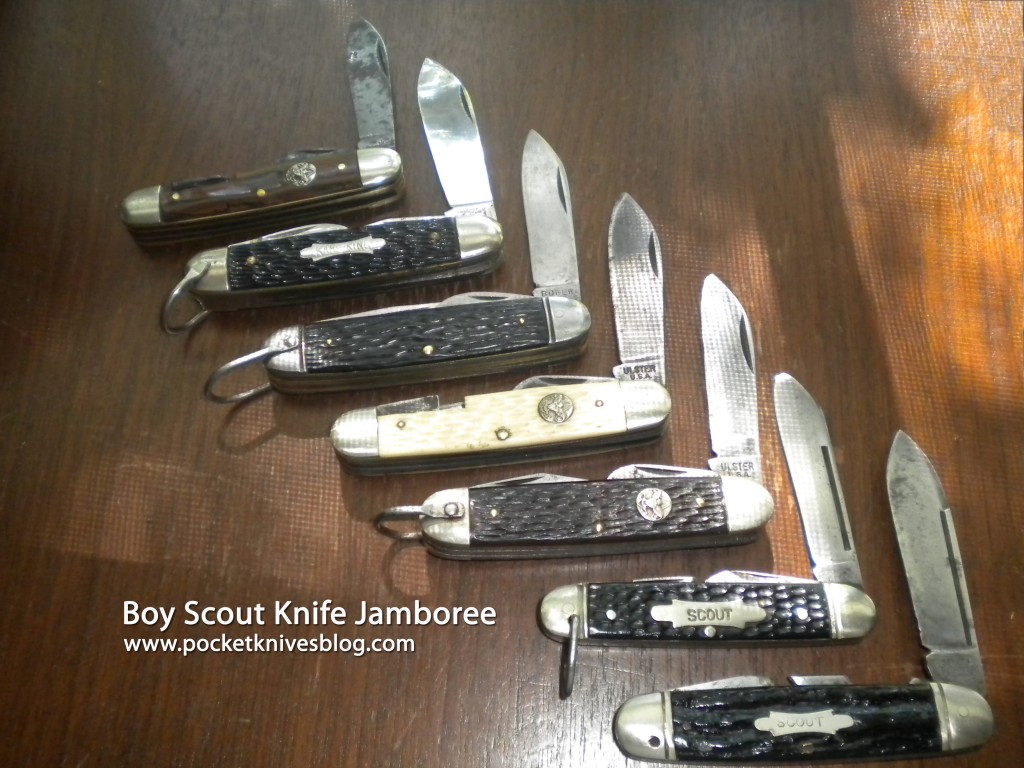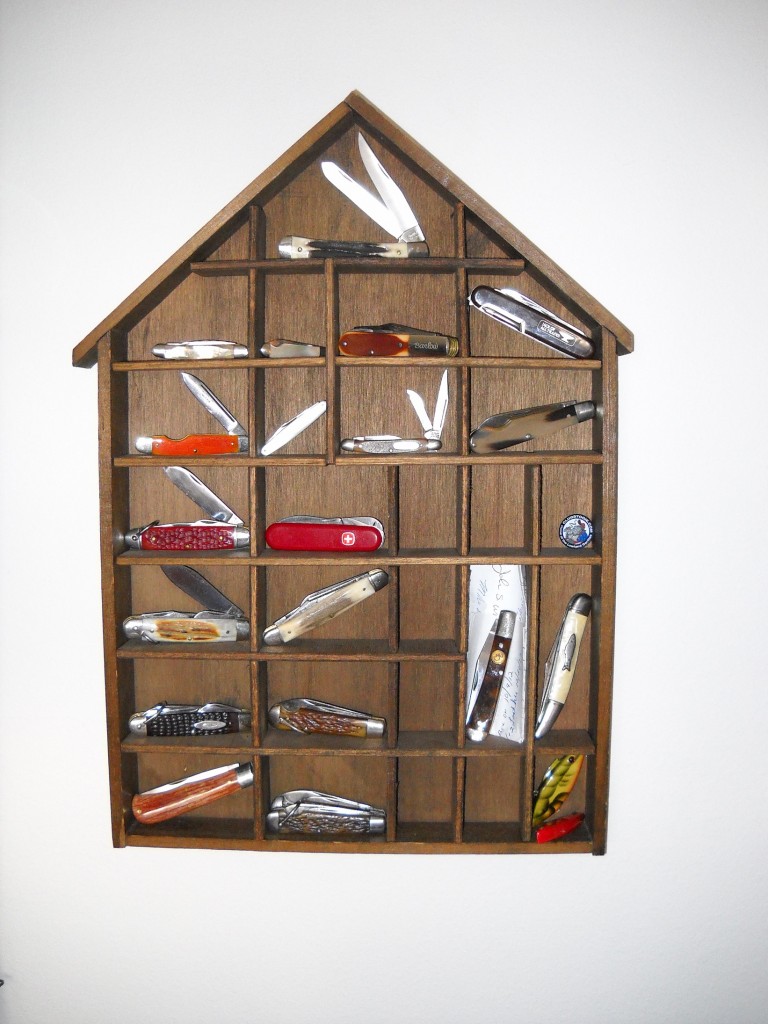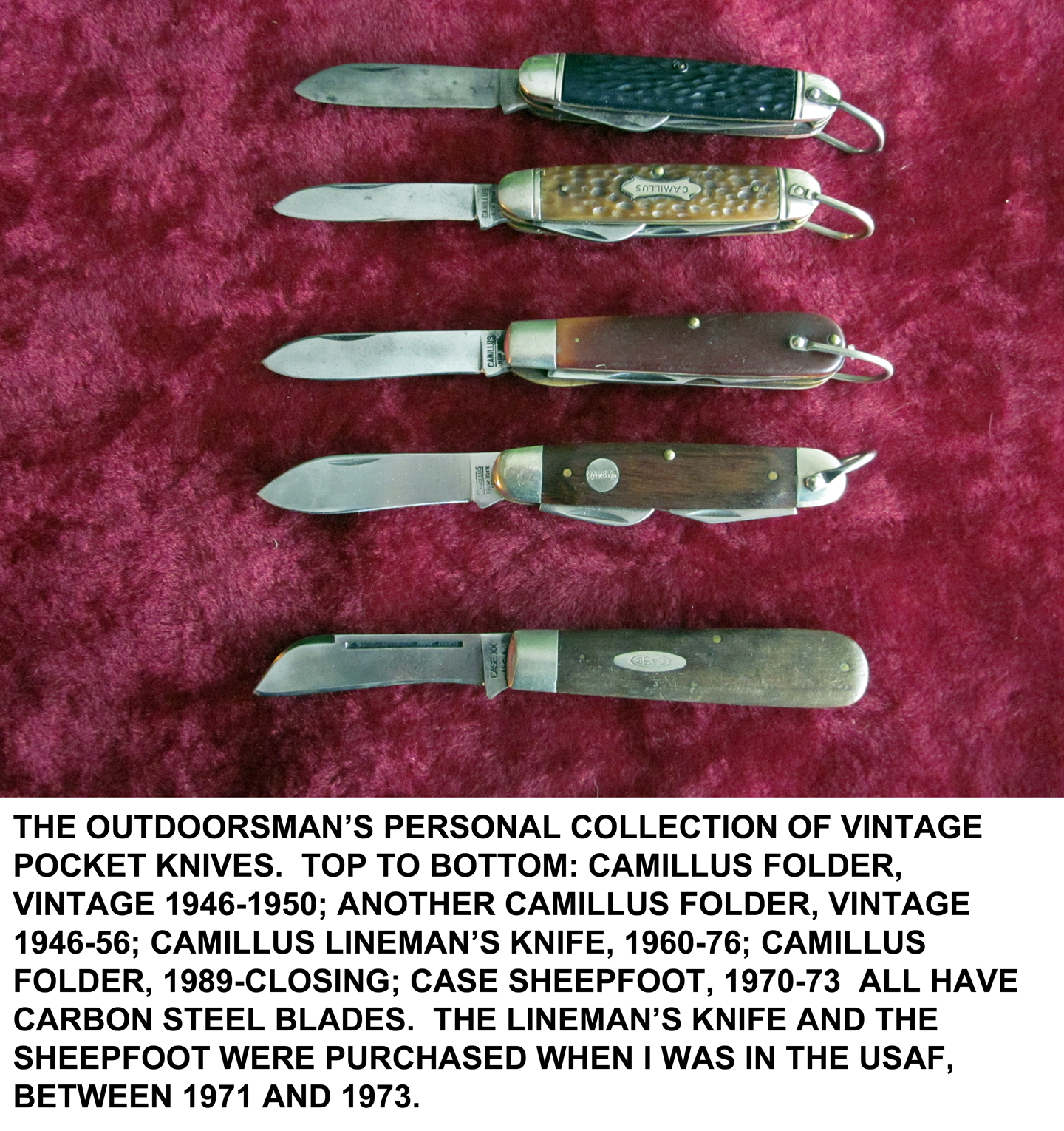

NRVO Note: I contacted Scott Rauber via the Internet to get some information about a knife I owned, and thanks to his help I was able to identify it. His very fine blog is well worth your attention if you have even the most casual interest in the topic: but I suspect most NRVO readers have more than that. I've owned, carried and put into daily use some sort of pocket knife for more than 60 years and simply can't imagine not having one with me. Of all the indignities and irritations inflicted upon us in the name of "security" one of the worst is the ban on carrying pocket knives on airplanes. How many "old friends" have gone into TSA bins because someone went through a checkpoint having forgotten it is impossible to estimate: but even one is too many.

Vintage Knife Collecting 101
Knives have a mysterious power to resurrect memories from days gone by and pull you back to a time when carrying and using a knife daily was the norm. Memories of our Dad's and Grandpa’s knives, and the knives we used as kids are magical! Those memories have the ability to take you back to using and collecting pocket and hunting knives. If you’ve recently been captivated, or if you’re a little more seasoned to vintage knife collecting, allow me to provide some basic tips.
Collect What Holds the Best Memories
Most any vintage pocket knife can be found on ebay.com. It’s a knife collector’s gamut of endless options and price points.
Schrade, Camillus, Colonial, Imperial are out of business
Even though these brand names are still produced today, they’re not made here in the USA. Older, USA-made models can still be purchased…..Primarily on Ebay.
Don’t be afraid of UGLY
There’s nothing wrong with those darkened knife blades, they’re just stained from use. That’s how “stainless” knives came to be….the blades were made not to “stain.” Most seasoned knife collectors prefer a little darkening as long as the blade isn’t eat up with rust. Rust is another animal.
AH-SNAP!
Back in the old days some makers produced slip-joint knives (and still some today such as Case, Great Eastern Cutlery, Canal Street Cutlery, and others) A slip-joint knife has no locking mechanism so the blade can come back if improperly used. What there should be is a reasonable amount of “SNAP” when closing the folding pocket knife into the cavity.
This may be a little in-depth, but it indicates the amount of the use a knife has seen. If the snap is very light or not present, it won’t be recreated. A good hard snap is the MacDaddy when buying on oldie!
BLADE WOBBLE
If the blade(s), when open, move side-to-side the knife is what we call “loose.” It’s not the end of the world, but if you plan on using and carrying the knife it’ll only worsen and make for a disappointing cutting experience. On the other hand, if the knife will be on display, and possibly passed on, then it’s not as vital.
RUSTY
Yeah, rust….not really good for anything, at least not that I can think of. There’s a difference between a darkened patina on a knife blade and rust. Rust destroys and can eat through the metal. Rust does assist in creating patina….you just don’t want a lot. And if the rust is more than surface, there’s not enough WD-40 to remove it.
BLADES
I personally have a pet-peeve for a knife that has grinding wheel marks on it. I don’t like it. Some knife sharpeners have used grinding wheels to speed up the sharpening time and usually all it does is create unevenness and grind marks. Also keep a close eye to the “fullness” of the knife blade and see how much of the original size is missing from sharpening or broken, chipped steel.
APPEARANCE
Check the overall appearance by looking under the cavity (where the springs can be seen), into the cavity (where the blades are housed), at the bolsters (usually shiny metal ends), and the tang stamp. If the handles (aka scales) are chipped, cracked, or peeling this reveals a potential handle replacement situation.
TANG STAMP
Reading the tang stamp is crucial in identifying a vintage knife. Most all of the past knife factories identified their knives with a stamp at the base of the main blade. And in almost all cases, the letters USA were included. In some cases, those were the only letter stamped at the tang.
DON’T
If you’ve felt the stirring of the knife spirit, DON’T hesitate……answer the call and begin experiencing the purity of collecting vintage knives!
Considering the above tips will help in your decision to purchase a vintage knife worthy of collecting and reliving fond memories, and or a quality cutting experience!
If you like the “traditional” slippy (slip-joint) knives, but wouldn’t mind a current alternative, allow me to recommend a few high quality, American made knives that fit the bill:
Case XX Knives: www.wrcase.com
There’s a reason they have the largest knife collectors club in the universe.
Great Eastern Cutlery: http://greateasterncutlery.net/blog/
These folks still use carbon steel which is my preferred steel):
Canal Street Cutlery: http://www.canalstreetcutlery.com/
Even though Schrade USA is no longer making knives, these are folks who worked at the Schrade USA factory and still do today because it’s the same plant where Schrade knives were made.
I’ve personally reviewed knives from the above factories and it’s a pleasure to know the American Spirit of quality craftsmanship still exists today!

Steel Sahlute my Knife Brothers!
--Scott Rauber

Three Inch Blade
Mostly is it a dodge, mostly hidden alongside metal pack struts
Threatened with confiscation, we retreated
For your burial in that decorative planter above the departure lounge.
Exhumed upon my return, none the worse for wear, yet,
Some security camera somewhere knows all.The vegan spreading nut butter mustn’t know
You slipped the hide off a road-killed gray fox days ago;
That fingernails and scion wood were anointed
Or a risk-needy nephew was introduced
To mumbly peg, as ritualized as a brix.You will disappear. You always do. And I will be angry
That I can’t hold you until bolsters loosen.
Yet China will regurgitate another EDC pocket bulge
Sale bin Puma, Schrade, or Buck
Partner for a month, a year, a score, no more.Rattle my dryer, plumb black holes
Of jean pockets after desecrating effete pocket screens.
Then offer your 400-grit work grimace
Before abandoning me to red oak litter.
Bride to a dollop of squirrel guts.Tool of my hand, where is the point?
Ever ready comfort, capability, and distracted desk spinning
Remind me to travel hard, sharpen up,
Welcome the dulling wear of time's demands
And step to darkness a grinning life-scarred corpse.— Lee Foote
24 February 2020,
At 36000’
| HUNTING | GUNS | DOGS |
| FISHING & BOATING | TRIP REPORTS | MISCELLANEOUS ESSAYS |
| CONTRIBUTIONS FROM OTHER WRITERS|
| RECIPES |POLITICS |